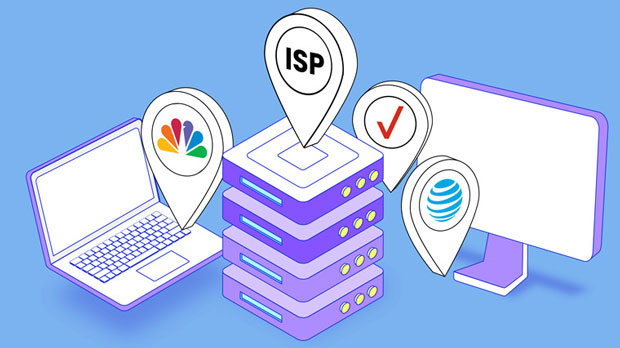In the modern Internet era, ensuring network security and privacy has become an important demand for people to access the Internet every day. socks5 proxy, as an efficient network proxy protocol, is widely used in various network scenarios, especially in protecting user privacy and achieving anonymous internet access, playing an important role. However, although free socks5 proxy software has an advantage in price, it often poses security risks due to improper configuration and use. This article will explore in detail how to configure free SOCKS5 proxy software to ensure the highest level of security and privacy protection during use. We will conduct an in-depth analysis of configuration steps, common security risks, and how to prevent these risks, in order to help users fully utilize the advantages of SOCKS5 proxy while maximizing the protection of their data and privacy1. Overview of SOCKS5 Proxy SOCKS5 proxy is a proxy service that supports TCP protocol. It allows users to access the Internet through the proxy channel established between the client and the server. Compared to other types of proxies such as HTTP proxies, socks5 proxies have higher flexibility and can handle multiple protocols, including HTTP, FTP, SMTP, and even support P2P protocols. SOCKS5 proxy has strong anonymity because it does not modify the header information of user requests, avoiding the leakage of users' real IP addresses. Therefore, it is widely used for privacy protection, bypassing geographical restrictions, and avoiding tracking purposesAlthough SOCKS5 proxy provides a high degree of anonymity, due to its lack of encryption mechanism, data may be intercepted and analyzed during transmission. Therefore, when configuring and using SOCKS5 proxy, users need to take some additional security measures to ensure the privacy and security of their online activities2. Choose a reliable free SOCKS5 proxy serviceChoosing a reliable free SOCKS5 proxy service is the first step in ensuring security and privacy. Although there are a large number of free proxy services on the market, not all free proxies can provide sufficient security protection. Here are several important factors to consider when choosing a free SOCKS5 proxy:1. Service provider's reputationChoosing a free agency service provider with a good reputation and credibility is very important. The credibility of a proxy service can be determined by viewing relevant forums, comments, and user feedback. Avoid unverified service providers to prevent their proxy servers from being used to collect user data or engage in other malicious activities2. Do you provide log recordsSome proxy service providers may record users' internet logs, which is a huge risk for privacy protection. Therefore, when choosing a free SOCKS5 proxy, it is necessary to confirm whether it has a strict no log policy, that is, the service provider will not store users' online activity data3. Stability and speed of serviceA reliable SOCKS5 proxy should have good stability and fast connection speed. Free agents often face limitations in bandwidth and connection quality, which may result in frequent disconnections, slower speeds, and other issues that affect the user experience. You can choose the most suitable proxy service for yourself by testing the response time and stability of the proxy4. Does it support encryptionAlthough the SOCKS5 protocol itself does not provide encryption, some proxy providers may combine other encryption technologies such as SSL or TLS to enhance data security. Using these encryption protection features can effectively prevent man in the middle attacks and data leaksIII. Basic steps for configuring free SOCKS5 proxy softwareAfter selecting a suitable free SOCKS5 proxy service, the next step is to configure the proxy software. The configuration process is not complicated, but it requires strict adherence to the steps to ensure that everything runs smoothly. The following are the general configuration steps:1. Download and install the proxy clientFirstly, you need to download a client software that supports SOCKS5 proxy. Common proxy clients, such as PYPROXY. Choose the appropriate software version for installation based on your own operating system2. Get proxy server informationBefore using SOCKS5 proxy, you need to obtain the proxy's server address, port number, username, and password information from the service provider. For free service providers, this information is usually provided through email or official websites3. Configure proxy settingsAfter starting the proxy client, select SOCKS5 proxy protocol in the software settings interface and enter the server address and port number provided by the provider. If the proxy service requires authentication, enter the username and password4. Verify connectionAfter configuration is complete, you can access an IP address query website through a browser to confirm whether you have successfully connected to the proxy server and that the IP address has changed. This can help verify if the agent is working properly5. Enable encryption function (optional)If your proxy software supports encryption and you want to improve security, you can enable the relevant encryption options. This ensures that the data during transmission will not be intercepted and analyzed by third partiesFourth, how to ensure the security and privacy of SOCKS5 proxyAlthough SOCKS5 proxy can provide users with a certain degree of anonymity, it does not have encryption function and has certain security risks. Therefore, when using a free SOCKS5 proxy, users should take the following measures to ensure their network security and privacy:1. Using encrypted communication protocolsWhen using SOCKS5 proxy, other encrypted communication protocols such as SSL/TLS, VPN, etc. can be combined to increase data encryption protection. These protocols ensure that your online activities cannot be decrypted even if intercepted by third parties2. Enable DNS leak protectionDue to SOCKS5 proxy only proxy TCP traffic, DNS requests may leak the user's true location. To prevent DNS leaks, users should ensure that the proxy software supports DNS leak protection or use encrypted DNS services (such as DoH or DoT) to protect DNS queries3. Regularly replace proxy serversRegularly replacing socks5 proxy servers can reduce the risk of being traced. By using different proxy servers, it is possible to avoid being identified and tracked by attackers when using the same IP for a long time4. Use firewall and virus scanning softwareWhen using SOCKS5 proxy, it is recommended to enable a firewall and conduct regular virus scans to improve device security. This can effectively prevent malicious software and attackers from exploiting proxy vulnerabilities to invade your device5. Avoid logging into sensitive accountsWhen using a free SOCKS5 proxy, it is best to avoid logging into sensitive accounts such as bank accounts, email addresses, etc. Although SOCKS5 proxy can hide users' IP addresses, it cannot guarantee other types of security. Therefore, avoiding handling important affairs in a public network environment can reduce security risksV. ConclusionThe free SOCKS5 proxy software is an effective tool that can help users achieve anonymous internet access and protect privacy. However, security and privacy protection are always key considerations when using proxies. Choosing a reliable free SOCKS5 proxy service, configuring proxy software correctly, and taking additional encryption and security measures are all key steps in ensuring network security. By configuring and using SOCKS5 proxy reasonably, users can effectively protect their online privacy, reduce the risk of network attacks and information leakage. Maintaining vigilance and taking appropriate protective measures during use are necessary prerequisites for ensuring anonymity and privacy protection
Jan 06, 2025
![arrow]()



















































